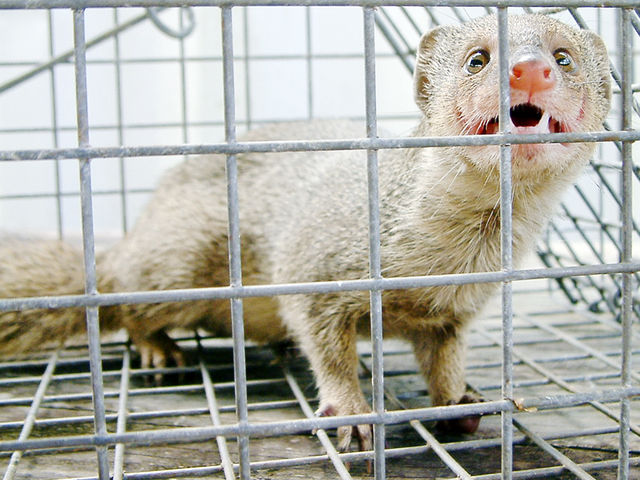LIHUE — Kauai has the largest nene population. It’s home to 90 percent of the world’s Newell shearwaters. And it’s a refuge for many other threatened and endangered birds, thanks to the work of conservationists. But that could all be
LIHUE — Kauai has the largest nene population. It’s home to 90 percent of the world’s Newell shearwaters. And it’s a refuge for many other threatened and endangered birds, thanks to the work of conservationists.
But that could all be undone by a weasel-like animal with a kitten nose and razor sharp teeth.
“It’s imperative that the mongoose doesn’t get here,” said Bill Lucey, project manager at the Kauai Invasive Species Committee. “If it does, a lot of those animals will become critically endangered.”
The mongoose is an animal so elusive it’s unknown whether they exist on Kauai. The invasive species has taken out portions of the bird populations on Oahu, Maui and Molokai. But on this island, there have been just three confirmed sightings.
The first was in 1976, when a lactating female was discovered dead on Kaumualii Highway in Kalaheo. The second was in May 2012 when a live mongoose, believed to be the first captured on Kauai, was caught in a trap at the Marriott Kauai Lagoons. Two months later, a live juvenile was captured at the Young Brothers pier in Nawiliwili.
It’s Lucey’s hypothesis that these three mongoose were shipped in as accidental cargo. But with 334 unconfirmed mongoose sightings on Kauai since 1968, it’s difficult to say whether they were rare foreign invaders or part of a resident population.
“We’re very, very concerned about mongoose getting here so the first step is to really nail down whether mongoose are here or not,” Lucey said.
Mongoose eradication experts from around the world will convene at the Kauai Marriott Resort Aug. 10-13 to discuss techniques for determining whether there’s a mongoose population on Kauai and, if so, how to get rid of it. After the conference local conservationists will form a comprehensive plan for dealing with the issue and present it at a public meeting.
Mongoose were brought to Hawaii by the sugar industry in 1883 in a failed attempt to control rats in the sugar cane fields. Mongoose prey on birds and bird and turtle eggs and can be carriers of deadly diseases like leptospirosis. They currently have no natural predators in Hawaii to keep their numbers in check.
In addition to maintaining live traps at Nawiliwili Harbor, KISC responds to credible sightings with traps, bait cameras, and tracking tunnels that use an ink pad and blotter paper to capture the tracks of animals the pass through the number.
So far these tracking tunnels have attracted mice and rats — but no mongoose. Roosters, feral cats and dogs have made appearances on the motion-activated bait cameras that lure animals toward the lens with marine fish scraps. Not one mongoose has been captured on KISC’s cameras.
Mongoose sightings can be reported by phone to Kauai Invasive Species Committee at 821-1490.
“We are kind of not saying whether there’s a population or not,” Lucey said. “The sightings don’t show a very convincing pattern. From what we know right now there could be a population that just started a few years ago, or there could not.”



